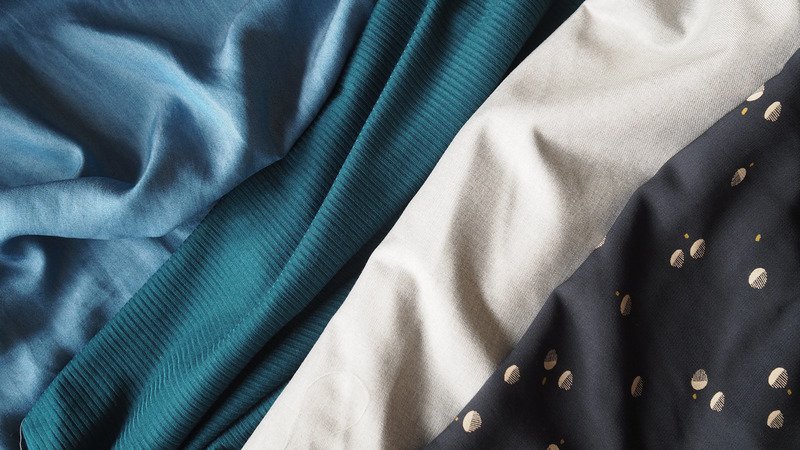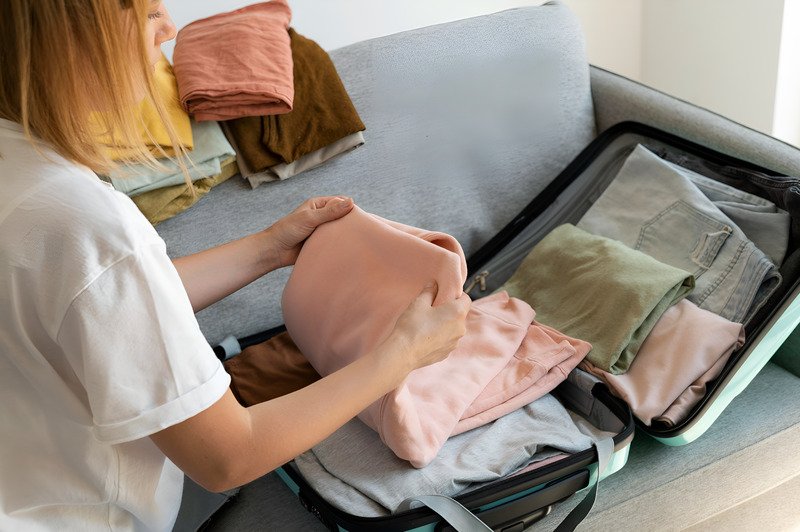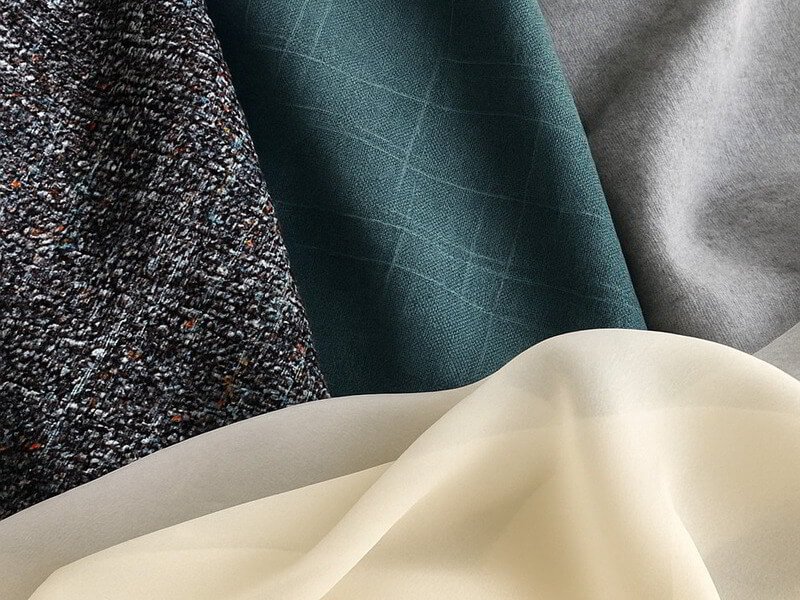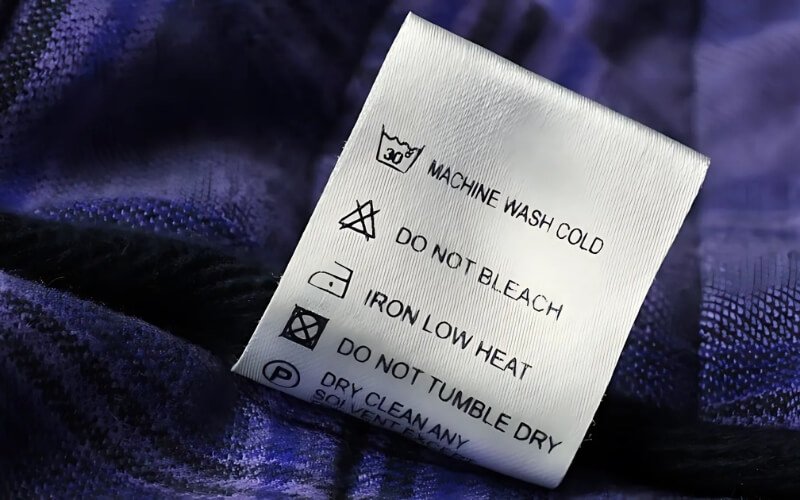What is Wrinkle-Resistant? Fabrics, Benefits And Easy Care Tips
Tired of endless ironing and clothes that crease moments after wearing? This guide unpacks everything you need to know about wrinkle-resistant fabric. You’ll discover the science behind these innovative textiles, explore common materials engineered to stay smooth, and understand the significant advantages they offer—from drastically cutting down ironing time to ensuring you look polished during travel or daily activities. Furthermore, learn essential care techniques to maintain their quality and simple tips for identifying these convenient fabrics when shopping, ultimately making your wardrobe management easier and more efficient.
1. What does “wrinkle-resistant” mean?
1.1 Simple definition
We all know the feeling. You pick out an outfit, and it’s full of annoying wrinkles. This is where “wrinkle-resistant fabric” comes to the rescue! So, what is wrinkle-resistant fabric? Simply put, it’s a special material designed to stay smoother and get fewer wrinkles.
This quality means it has good resistance to creasing. You might hear terms like ‘crease-resistant fabric’ or be seeking to better understand ‘wrinkle-free materials’; they all point to this useful feature. Think of it as the definition of a low-wrinkle textile. The main idea is that this type of fabric helps your clothing look neat with much less effort.

1.2 Why it’s good for your clothes
The biggest plus of wrinkle-resistant fabric is convenience. It means less time spent on ironing, or sometimes no ironing at all! This is especially great for travel. Clothes made from these fabrics tend to look much better when you pull them out of a suitcase. This is what easy-care fabric explained is all about: less work to keep your clothes looking good. Key benefits include:
- Saves time on ironing.
- Keeps clothes looking neat during travel.
- Generally easier to care for.
1.3 What you will learn in this guide
This guide will help you understand more about these clever fabrics. Here’s what we’ll cover:
- Why clothes get wrinkles.
- How these special fabrics work.
- Common types of wrinkle-resistant materials.
- Benefits of choosing these fabrics.
- Other important aspects
- Easy care methods
- How to spot them when shopping.
2. Why do clothes get wrinkles?
2.1 The basic science of wrinkles
Understanding why clothes wrinkle helps us see why wrinkle-resistant fabrics are so useful. It mostly comes down to a few factors. All fabric is made of tiny threads called fibers. The fiber type and overall fiber composition of a material play a big role. Some fibers are just more likely to wrinkle than others.
When you wear, wash, or pack clothes, the fibers bend and fold. If these fibers stay in that bent position after the pressure or moisture is gone, a wrinkle forms. Some fabrics, like regular cotton or linen, have fibers that bend easily. They don’t bounce back to their original shape very well, which is why they wrinkle a lot.

2.2 Common things that make wrinkles
Several everyday actions can cause wrinkles in your clothing during care and use:
- Washing: the tumbling and spinning in a washing machine.
- Wearing: simple movements like sitting or bending your arms.
- Packing: squeezing clothes into a suitcase or drawer.
3. How do wrinkle-resistant fabrics work to stop wrinkles?
3.1 The secrets to keeping clothes smooth
Fabrics achieve resistance to creasing in a few clever ways:
- Some fibers are naturally good at resisting wrinkles: Wool is a great example of natural fabrics that don’t wrinkle easily. The fiber type itself is the key here. These fibers resist wrinkles because they have a natural springiness or structure. Wool fibers, for instance, are like tiny springs that bounce back into shape. Their inherent fiber composition helps them do this. There are also new developments in naturally derived wrinkle-resistant treatments that aim to enhance this quality in other natural fibers.
- Man-made (synthetic) fibers built to stay smooth: Common examples include polyester and nylon. These synthetic fibers, like polyester, are often inherently wrinkle-resistant. They are strong, don’t absorb much water, and hold their shape well. You’ll find them in many types of clothing.
- Special treatments or “finishes” on fabrics: Fabrics like cotton, which normally wrinkle easily, can be treated to resist wrinkles. This involves applying a special fabric finish or chemical treatment. Sometimes this is called a “permanent press” finish. These treatments often work by helping the fibers “remember” to stay straight. One method involves cross-linking—a process where fibers are chemically bonded to help them keep their shape—which often uses a resin application (a special substance treatment). So, when cotton fabric undergoes such a treatment, it gains a wrinkle-resistant finish. These chemical finishes make cotton wrinkle-resistant, resulting in popular materials like cotton blend shirts. This type of chemical or physical treatment is very common.
- The way the fabric is made (its weave or knit): The weave structure (how threads are interlaced) or the type of knit can also help reduce wrinkling. A tighter weave or certain knit patterns are less prone to creasing. So, fabric construction (e.g., knit vs. weave) is an important factor. It’s good to know that specific weaves can enhance a fabric’s wrinkle resistance.
3.2 Is wrinkle-resistant vs. wrinkle-free/non-iron?
These terms are similar but can have slightly different meanings:
- Wrinkle-resistant: This means the fabric will get fewer wrinkles than normal fabrics. It’s easier to care for, but might still show slight creases.
- Wrinkle-free or non-iron: When you ask “what are non-iron clothes?”, these usually promise a higher level of performance. They are designed to need very little or no ironing at all to look smooth.
It’s good to remember that no fabric is 100% immune to all wrinkles under all conditions. But these special fabrics definitely make a big difference!
4. What are some common wrinkle-resistant fabrics?

4.1 Polyester
Polyester is a very common synthetic fabric. It often feels smooth and can sometimes be silky, though its texture can vary. You’ll find it in everyday clothes, activewear, travel apparel, and business shirts. It’s known for being durable and often affordable.
4.2 Nylon
Nylon is another strong synthetic fiber. It usually feels lightweight and somewhat slick. It’s often used for items like jackets, stockings, rainwear, and sportswear. Its durability is a key feature.
4.3 Cotton with wrinkle-resistant treatment (or cotton blends)
Regular cotton wrinkles easily, but treated cotton or a cotton blend can offer good wrinkle resistance. The goal is to keep the comfort of cotton while making it smoother. The treatment applied to the cotton fabric to achieve a wrinkle-resistant finish is what makes the difference. These are popular for shirts, especially business shirts and uniforms, as well as pants and kids’ clothes.
4.4 Wool
Wool is one of the best natural fabrics that don’t wrinkle easily. Its feel can range from very soft (like merino wool) to a bit coarser. It’s used for sweaters, suits, coats, and in wool blends. Its natural springiness helps it resist wrinkles.
4.5 Other blends (e.g., polyester-cotton)
Manufacturers often blend different fiber types to combine their good qualities. For example, a polyester-cotton blend can offer both the wrinkle resistance of polyester and some of the comfort of cotton. Understanding fabric blends for better wrinkle control can help you choose clothes that meet your needs.
5. Why choose wrinkle-resistant clothes?
Choosing wrinkle-resistant clothing offers several advantages, mainly making ease of care a reality.
5.1 Saves you time and effort
The biggest benefit is less or no ironing. This means more free time for you! Wrinkle-resistant fabrics typically require less ironing, making them very low maintenance.
5.2 Perfect for travel
Are wrinkle-resistant clothes good for travel? Absolutely! They tend to look much fresher when taken out of a suitcase. This makes them ideal for travel apparel. For travel clothing, a desired attribute is often to be wrinkle-free or very close to it.

5.3 Helps you look neat and tidy
These fabrics maintain their smoothness throughout the day, helping you look put-together. This is great for work attire like business shirts and uniforms. For instance, at Packlove, where we provide labeling solutions, many clients select wrinkle-resistant materials for uniforms. This choice helps ensure their teams maintain a polished and professional appearance with minimal fuss.
5.4 Often long-lasting
Many wrinkle-resistant fabrics, especially synthetics like polyester and nylon, are also quite durable. This means the clothes can last longer. Durability is a valuable fabric quality that often comes with wrinkle resistance.
6. Anything else I should know about wrinkle-resistant fabrics?
6.1 How they might feel
A treated or synthetic material might feel different from an untreated natural fiber like plain cotton. For example, some older synthetics weren’t very breathable. However, modern synthetic fabrics have significantly improved; many are now designed for enhanced comfort and breathability alongside wrinkle resistance.

6.2 Thinking about the environment
It’s true that some types of chemical treatment are used to make fabrics wrinkle-resistant. If this is a concern for you, you can look for information from brands about the types of treatments they use. Some companies are exploring sustainable options for achieving wrinkle resistance in textiles or using eco-certified wrinkle-resistant finishes.
6.3 They resist wrinkles, don’t magically erase them
It’s important to have realistic expectations. These fabrics resist wrinkles, meaning you’ll see fewer of them, and they’ll be easier to smooth out. However, they don’t magically erase every single crease without any care, especially if clothes are left crumpled for a long time.
7. Easy ways to care for your wrinkle-resistant clothes
Good news! Caring for these clothes is usually simple. Proper garment care helps maintain the wrinkle-resistant properties of the fabric.
7.1 Washing your garments
Always read the care label first! This is a very important tip. Good care labels are essential for maintaining the quality of wrinkle-resistant garments. They often include instructions like ‘requires little to no ironing’.

7.2 Drying them properly
Check the care label again. Often, you can tumble dry low or medium heat. Here’s a key trick: remove clothes from the dryer promptly, ideally while they are still slightly damp. Hang them up or fold them right away.
7.3 Storing them neatly
Hanging items like shirts, dresses, and pants is usually the best way to prevent new wrinkles. If you fold items, do it neatly along the seams and try not to squash them in drawers.
7.4 What about ironing?
You might not need to do much ironing at all! Many items will look great straight from the dryer if you handle them as suggested above. “Minimal ironing needed” is a characteristic of these fabrics. If a quick touch-up is needed, use a low heat setting on your iron. And, as always, check the care label first.
8. How to tell if fabric is wrinkle-resistant when shopping
Here are a few tips to help you identify if a fabric is wrinkle-resistant when you’re looking for new clothes:
8.1 Look at the label or product description
This is the easiest way. Look for terms like “wrinkle-resistant,” “easy care,” “non-iron,” or “crease-resistant” on the clothing tag or in the online product details. This is a key way to identify wrinkle-resistant material.
8.2 Do a quick “scrunch test”
If you can, carefully take a small part of the fabric in your hand and gently squeeze or “scrunch” it for a few seconds. Then let it go. If the wrinkles fall out quickly or are very faint, it’s a good sign the fabric has wrinkle-resistant properties.
8.3 Feel the material
With a bit of experience, you might start to recognize the feel of common wrinkle-resistant fabrics. For example, many polyester fabrics have a distinct smoothness. Some treated cottons also feel a bit different – often smoother or slightly slicker – than untreated cotton.
Explore more:
To sum up, wrinkle-resistant fabric is a great innovation that saves time on ironing and helps your clothing look good with less fuss. They truly offer easy care. It’s no surprise that many consumers seek wrinkle-resistant clothing for convenience.
Whether it’s for work, travel, or just everyday wear, choosing clothes made from wrinkle-resistant fabrics is a smart move. Wrinkle resistance is a key apparel feature that simplifies laundry and helps maintain a neat appearance. Understanding how to choose fabrics for easy maintenance clothing can make a big difference in your daily routine.
Need clear care labels for your wrinkle-resistant apparel? Packlove can help! Explore our custom label options. Questions about branding your clothing line with high-quality labels and tags? Contact the Packlove team for expert advice.






















